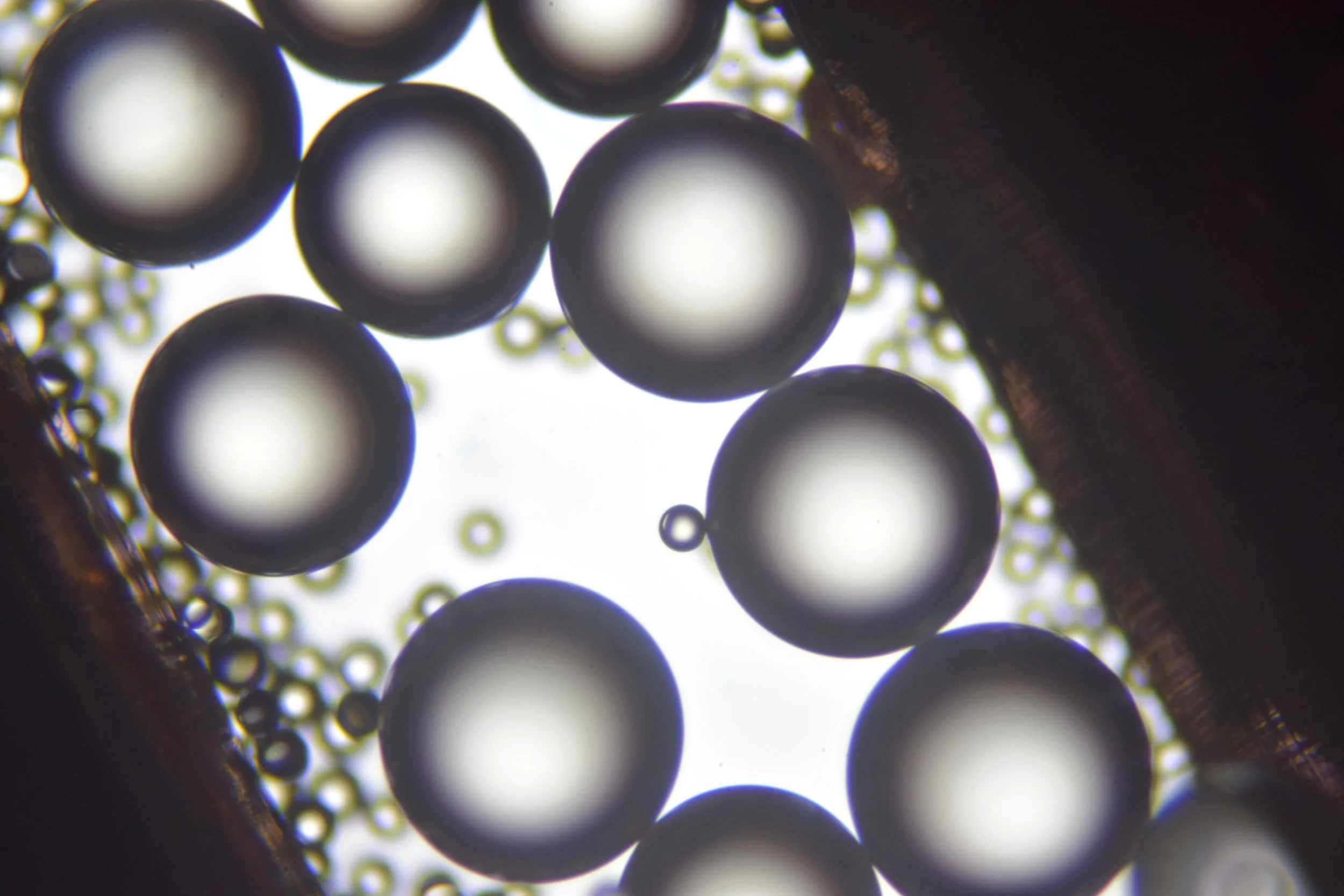










The control of living systems as part of design interfaces is of interest to both the scientific and design communities due to the ability of living organisms to sense and respond to their environments. They may, for example, detect and break down harmful environmental agents, or create beneficial products when environmental levels dropped below a certain threshold. However, it is also important for these systems to be reversible so that the biological components are only active when their functionality is necessary, and the system can remain dormant otherwise.
Credit: Sunanda Sharma and Bianca Datta

The Living Material Library is an exploration of tunable hybrid systems. Our work in this area demonstrates the means through which intrinsic material properties may be functionally changed through environmental factors and, in turn, serve as dynamic substrates for living systems.
Credit: Sunanda Sharma

Nearly all organisms have highly developed sensing capabilities, and have been shown to behaviorally respond to changes in substrate properties. By creating a tunable and reversible material system, we explore how cell behavior such as adhesion, patterning, and differentiation may be influenced via an active interface.
Credit: Sunanda Sharma

In this iteration, we propose a reversible material system that allows for control of living interactions (much like a light switch). We are particularly interested in fluid material systems (such as electrorheological fluids) that transition from a liquid-like to a solid-like state when exposed to electric fields and currents. For this reason, we investigated biocompatible materials relevant to ERFs, such as cornstarch, chitosan, zeolites, and cellulose.
Credit: Bianca Datta

We explored the use of two different species of bacteria - Escherichia coli and Bacillus subtilis. The latter, shown here, has well documented mechanosensitive behaviors.
Credit: Sunanda Sharma

We designed a custom set up for activating electrorheological fluids that consisted of a glass 100mm diameter dish with a defined 1mm width corridor bounded by copper tape. We applied 1kV while the ERF of choice (chitosan in silicone oil shown here) was in the corridor, resulting in global stiffening of the fluid as chains were formed.
Credit: Sunanda Sharma and Bianca Datta

The chains formed, such as by cornstarch shown here, were visible using an optical microscope at 10x. This stiffening is tunable and reversible, thus allowing for a method to modify a substrate for cell interaction.
Credit: Sunanda Sharma and Bianca Datta